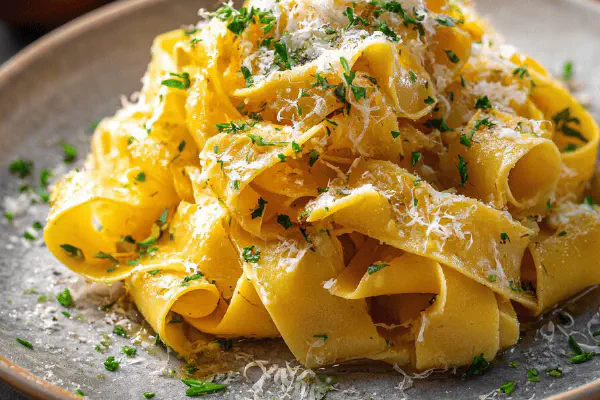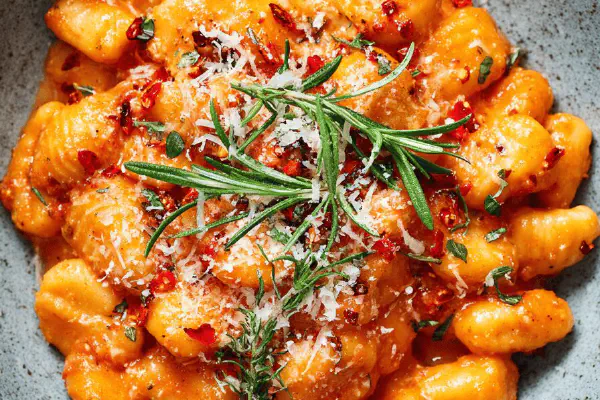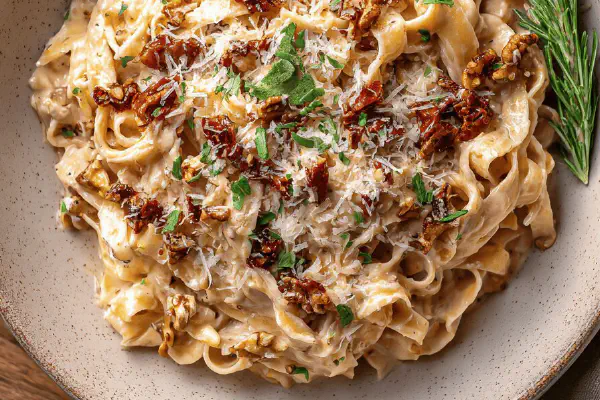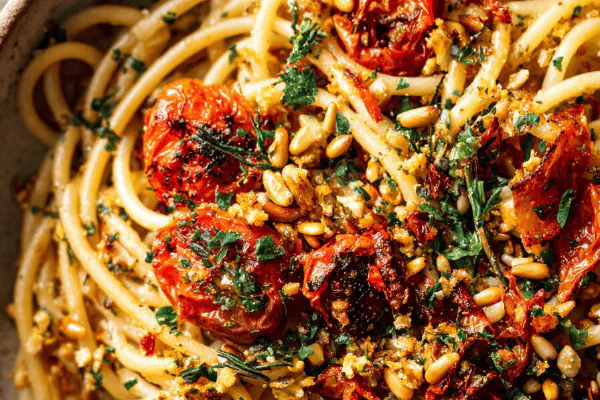Featured Recipe
Rustic Homemade Pici
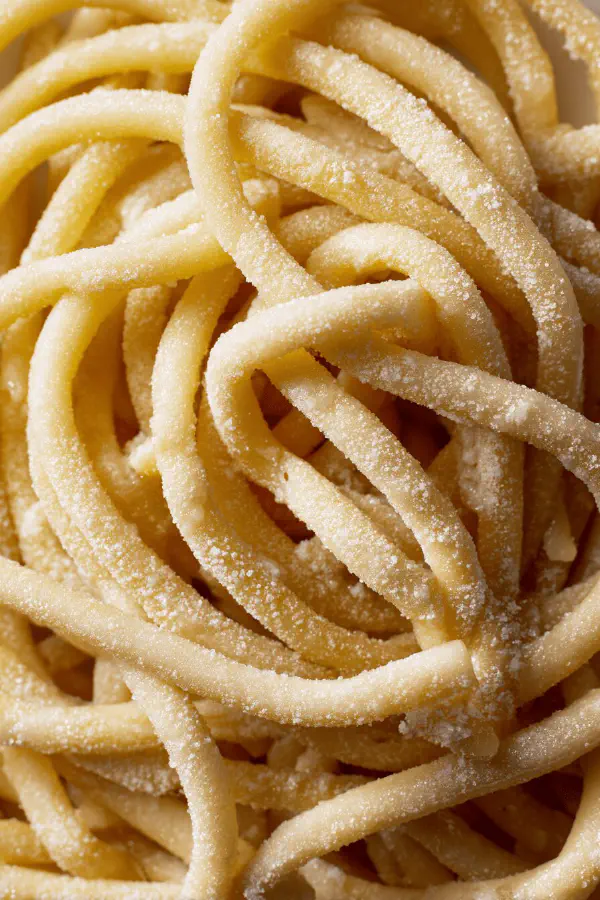
By Kate
"
Handmade Tuscan-style pasta made from a blend of fine semolina and unbleached all-purpose flour, lightly salted and bound with hot water to jumpstart gluten formation. Rolled and shaped by hand into thick rustic noodles, ideal for holding chunky sauces. Simple ingredients, no eggs or dairy. Dough texture key, sticky but firm. Precise handling avoids overworking. Cook in salted water until tender but still offering bite. Can freeze before cooking. A straightforward base for spicy garlic tomato or hearty ragù sauces. Substitutions and timing tips included.
"
Prep:
40 min
Cook:
7 min
Total:
47 min
Serves:
4 servings
pasta
Italian
homemade
vegetarian
simple
Introduction
Hot water, semolina, plain flour. No eggs, no fuss. Rustic pasta born from centuries-old Tuscan tradition, rough and thick, molded by hand. Start with the right flour combo — coarse enough semolina to grip sauce, soft enough flour for pliability. Don’t skimp on kneading, it tightens gluten, builds that resilient network. You’ll want dough smooth but tender, not sticky glue. Rolling out smooth sheets then slicing thick strips. Feel it firm, then coax into fat, uneven cylinders with fingertips, that’s the signature shape. Dusting with coarse semolina stops them from clumping together. Boil in salted water till surface bloats slightly but remains bitey underneath. Toss with olive oil so they don’t stick on draining. Freeze raw, half an hour, firm them up before bagging. Thawing ruins texture; cook frozen straight up, add minute or two to boiling. Makes hearty base for tomato chili-garlic or meaty ragù. Building blocks you’ll return to often.
Ingredients
About the ingredients
Swapping proportions here pushes the balance for texture — more flour yields firmer dough, more semolina amps grit and bite. Water temp critical: boiling hot helps partially cook starch, making dough easier to knead and less sticky. Salt adds flavor and strengthens gluten strands, don’t omit or skimp. Coarse semolina, not fine flour, for dusting; it locks moisture, prevents sticking without incorporating and softening dough like flour does. Use semolina labeled “for pasta” if possible, or grind a bit yourself. No eggs here; traditional pici is water and flour only. For gluten-free versions, substitute chickpea or rice flour blends but expect less elasticity and different texture; handle delicately. If dough feels dry, add a teaspoon of warm water. Too sticky, dust hands lightly but avoid overflouring. Keep dough wrapped whenever resting to avoid crusting, brittle edges that ruin rolling and shaping.
Method
Technique Tips
Pour boiling water slowly into dry mix or it clumps unevenly; stir right away to form shaggy dough. Transfer and knead on lightly floured board—don’t overdo flour, keep it moist yet firm. Kneading develops gluten, giving chew and structure. Cut dough while slightly cool but still pliable; if too warm, strips stick, if cold, crack or crumble. Rolling strips and hand rolling to round cylinders requires patience — roll with gentle pressure, slow back-and-forth movements, avoid flattening. Dusting each formed strip prevents them from sticking during shaping or cooking. Boil vigorously, salt water heavily like seawater, it seasons pasta from within. Pasta done when pieces float, swell slightly, feel springy with a bit of resistance when bitten. Drain quickly; warm oil toss prevents them sticking as they cool. Freeze raw pici spread in thin layers to avoid clumping; cook straight from frozen. If water boils over, lower heat slightly but keep rolling boil. If dough too sticky, chill it briefly before slicing. Use a sharp knife to slice strips cleanly or dough will tear and fray. Timing is guide only, watch pasta appearance and texture closely.
Chef's Notes
- 💡 Humidity affects dough. Adjust flour or water based on weather. Stickiness means flour must be increased; if too dry, add water slowly. Knead well but not too long. Use whole flour if available.
- 💡 Cut strips while dough is pliable. Too warm and they stick, too cool leads to cracks. Use a sharp knife for clean edges. Gentle pressure when rolling ensures classic pici shape. Dust with coarse semolina.
- 💡 Salt water like the ocean. It flavors pasta as it cooks. Bring to a rolling boil before adding pici; stir gently to prevent clumping. The right texture is key; al dente means slightly firm to bite.
- 💡 Freezing? Firm pasta on trays first. Use airtight bags after. Cook frozen but extend boiling time by a couple of minutes. Should float when done. Toss with olive oil right after draining to avoid sticking.
- 💡 Watch pasta closely while cooking. Surface puffiness indicates readiness but check the feel. Add garlic or herbs for extra flavor while tossing. Experiment with sauces but keep simplicity in mind for best results.
Kitchen Wisdom
Can I use other flours?
Yes, blends like chickpea or rice are options. Expect differences in texture; gluten free requires delicate handling. Keep an eye on moisture levels.
How to store leftovers?
Fresh pici in fridge for a couple of days. Cooked can be frozen too. Thaw gently. Raw pasta stores longer but use soon as freezing affects texture.
What if dough is too sticky?
Dust hands with flour, lightly. Knead briefly; chilling can help. Balance is tricky, always adjust moisture. Avoid overflouring to keep texture.
Can I make pici ahead?
Absolutely. Freeze raw pici after a firming up period. Cook straight from freezer. Add some boiling time; don’t thaw if planning to cook.
